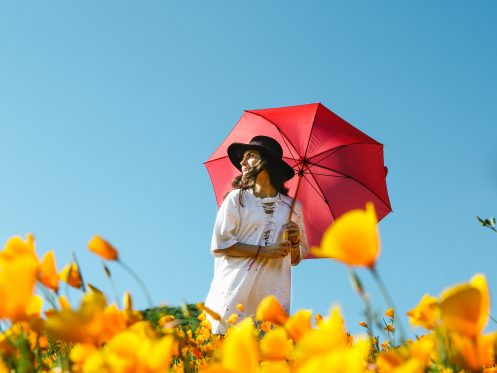Going for an afternoon drive in Texas is beautiful this time of year. Native wildflowers are beginning to bloom along our roadsides and in fields and pastures. The gorgeous sites have adorned many a greeting card, magnet, coffee table book, and postcard in gift shops across the state.
Texas is kind of wildflower famous, most notably for our state flower, the bluebonnet. In fact, Texas historian and journalist Jack Maguire once wrote, “The bluebonnet is to Texas what the shamrock is to Ireland, the cherry blossom to Japan, the lily to France, the rose to England and the tulip to Holland.”
While all the bluebonnets, buttercups and Indian blankets create a picturesque landscape, they actually serve a bigger purpose than just providing pretty spring scenery.
Don’t Pick ‘Em!
If you grew up in Texas, you probably remember being taught from an early age—don’t pick ‘em! This rule of Texas etiquette is so strict, that many Texans grew up believing picking wildflowers, especially our beloved bluebonnets, is illegal.
Maybe this myth is for the best. The thought of serving hard time for plucking these tantalizing blossoms has voided the temptation of many youngsters throughout generations. And though not against the law, it is heavily frowned upon to pick, mow, trample or destroy wildflower patches. Many of the species are annual, meaning they must seed to grown back the next year. Picking or damaging them before seeding can kill them and prevent them from coming back.
Also, it’s important to note—though there’s no law against picking bluebonnets or other wildflowers, it is against the law to trespass onto private property, pick or destroy plant life on state park grounds, and damage government property or rights of way.
We Need Wildflowers
Wildflowers serve many benefits to our area. In fact, the Texas Department of Transportation (TxDOT) even has a program dedicated to maintaining, preserving and encouraging their growth in state rights of way. Native flowers and grasses along the highways provide a habitat for natural wildlife, help conserve water and control erosion. Wildflowers also help to reduce the costs of maintenance and labor for the state, requiring less mowing and care in the areas they grow.
Bees are attracted to colorful blooms, so wildflowers greatly help the bee population in the state. Why is this important? Bees help boost our ecosystem and economy. As bees collect nectar from flowers, they also pollinate other plants. This includes millions of dollars’ worth of farm crops each year, according to the Texas A&M AgriLife Extension.
Additionally, wildflowers like bees just as much as bees like them. Many wildflowers aren’t self-pollinating. Encouraging a strong bee population supports the wildflower population, in turn.
Our Area’s Best Spots to Spot Wildflowers
Here’s a listing of roads and highways in GVEC’s service territory, featuring some of the most plentiful patches of petals this spring. Please remember to exercise the utmost caution as you travel to view our wonderful wildflowers!
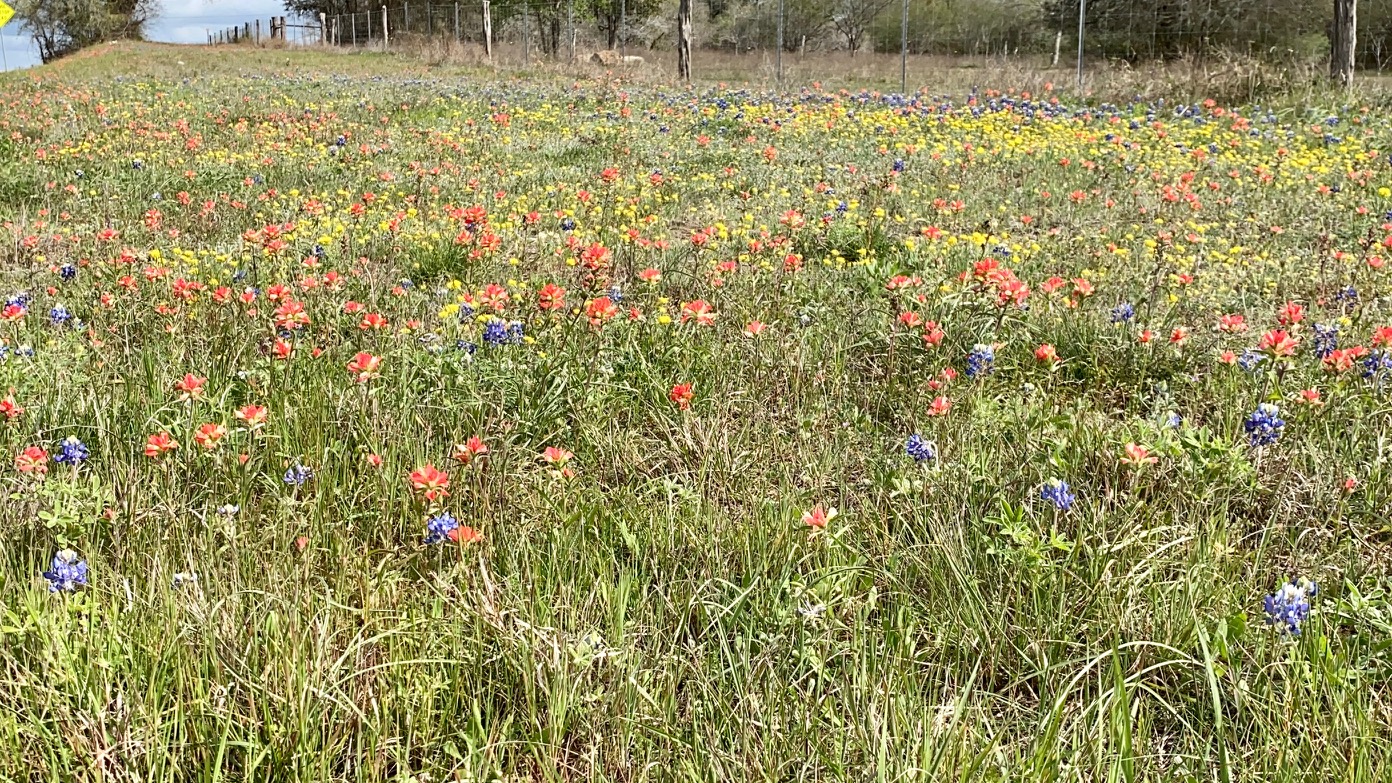
You’ll find this beautiful mix or bluebonnets, Indian paintbrushes and bitterweed along Highway 90 A from Gonzales to Shiner.
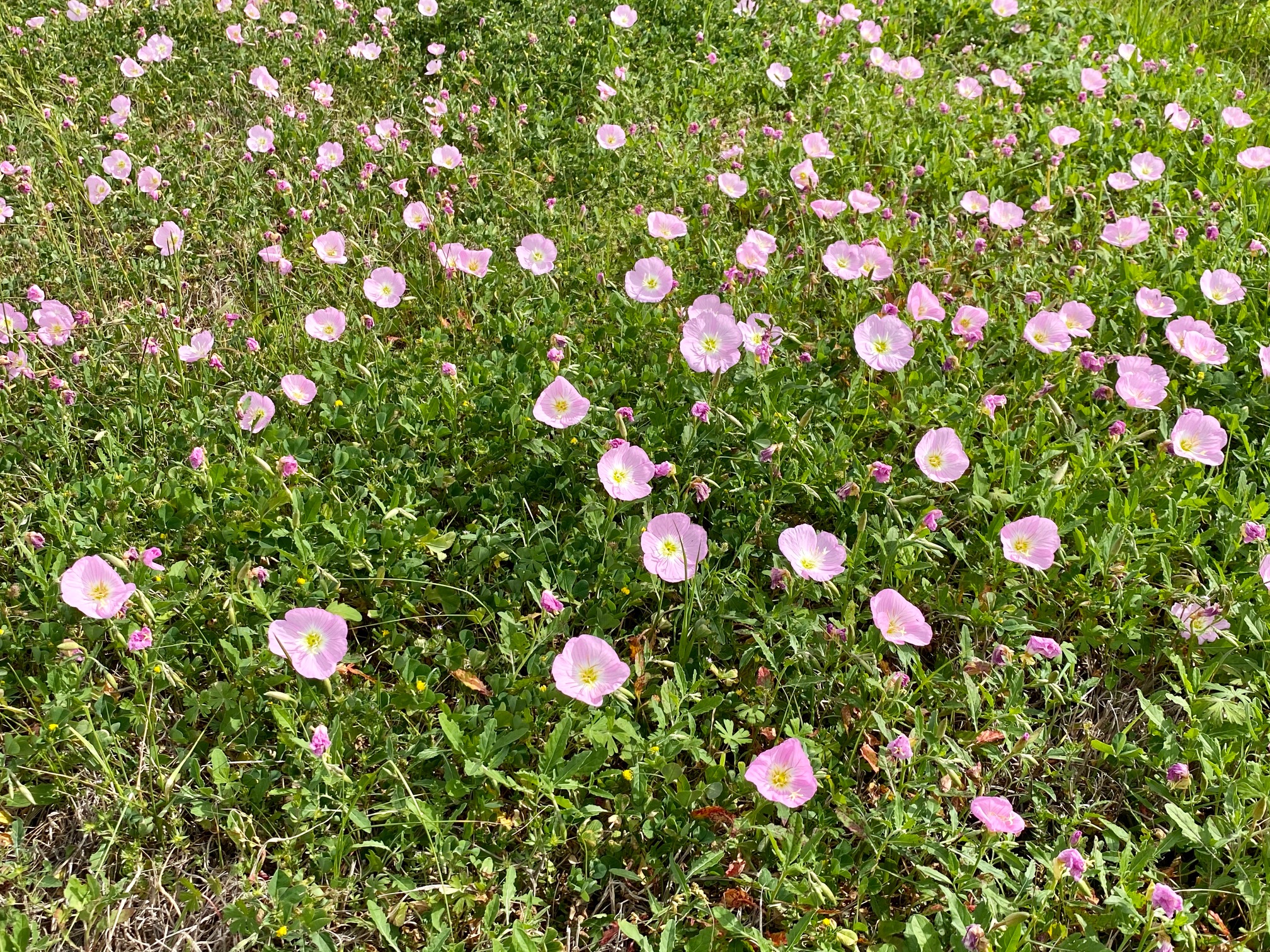
Pretty patches of pink evening primrose, also know as buttercups, are growing along Highway 95 from Shiner to Yoakum.
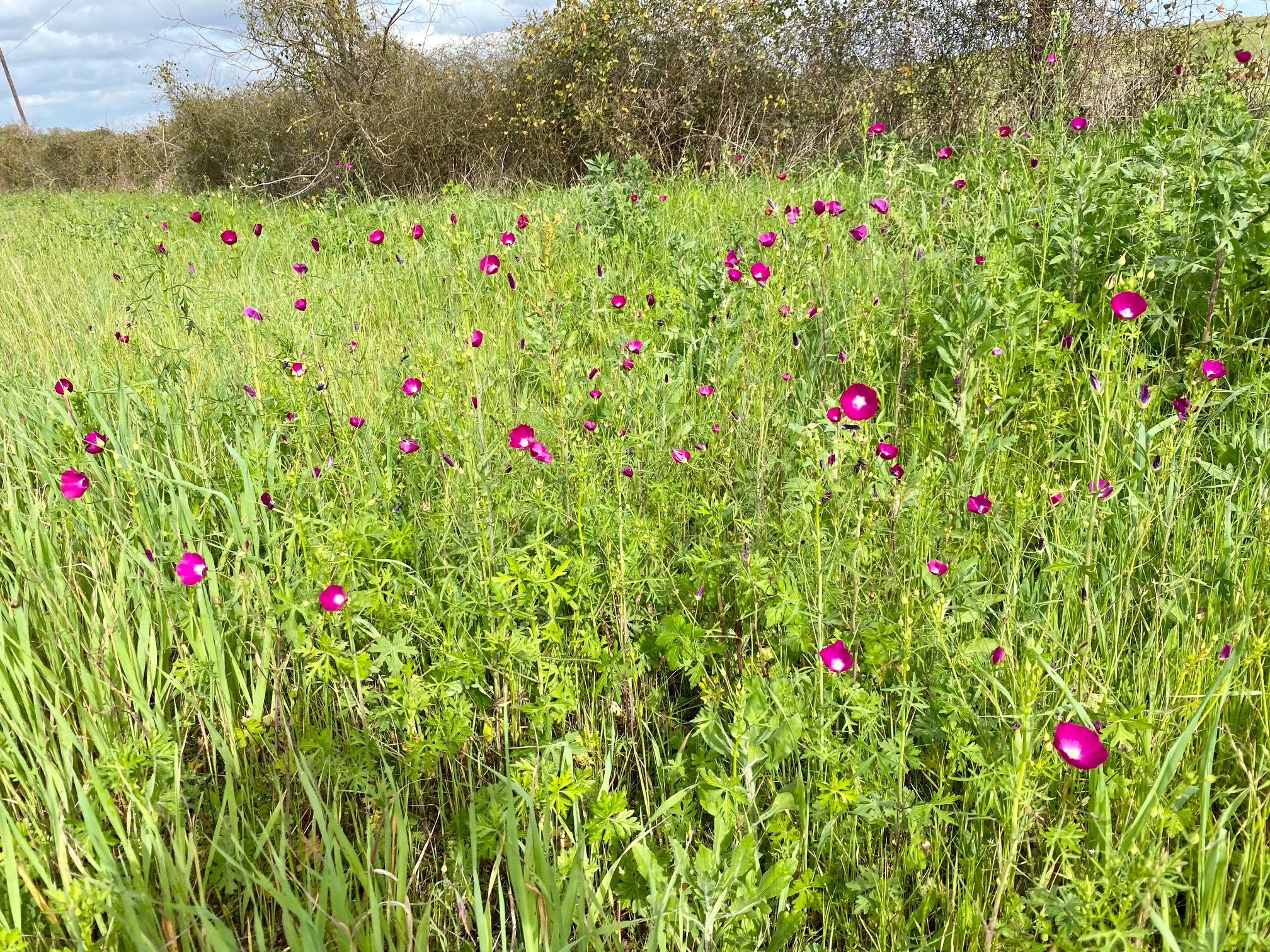
Purple winecups are plentiful along Highway 77 between Yoakum and Hallettsville.

In the opposite direction on Highway 77 from Yoakum to Cuero, you’ll find a breath-taking view of red and blue with Indian paintbrushes and bluebonnets.
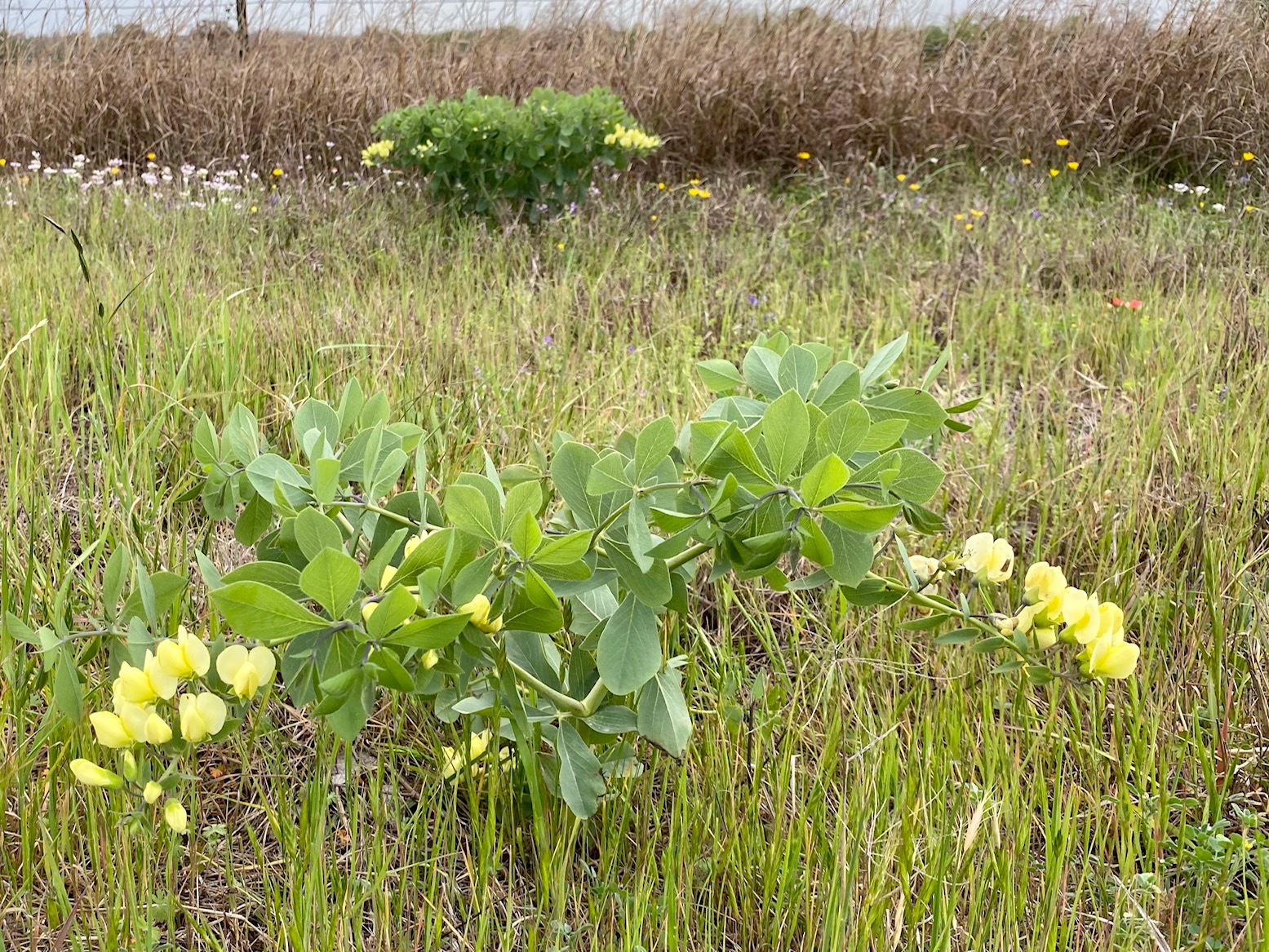
Traveling from Cuero towards Gonzales on Highway 185, you’ll spot bushels of unique yellow plains wild indigo.
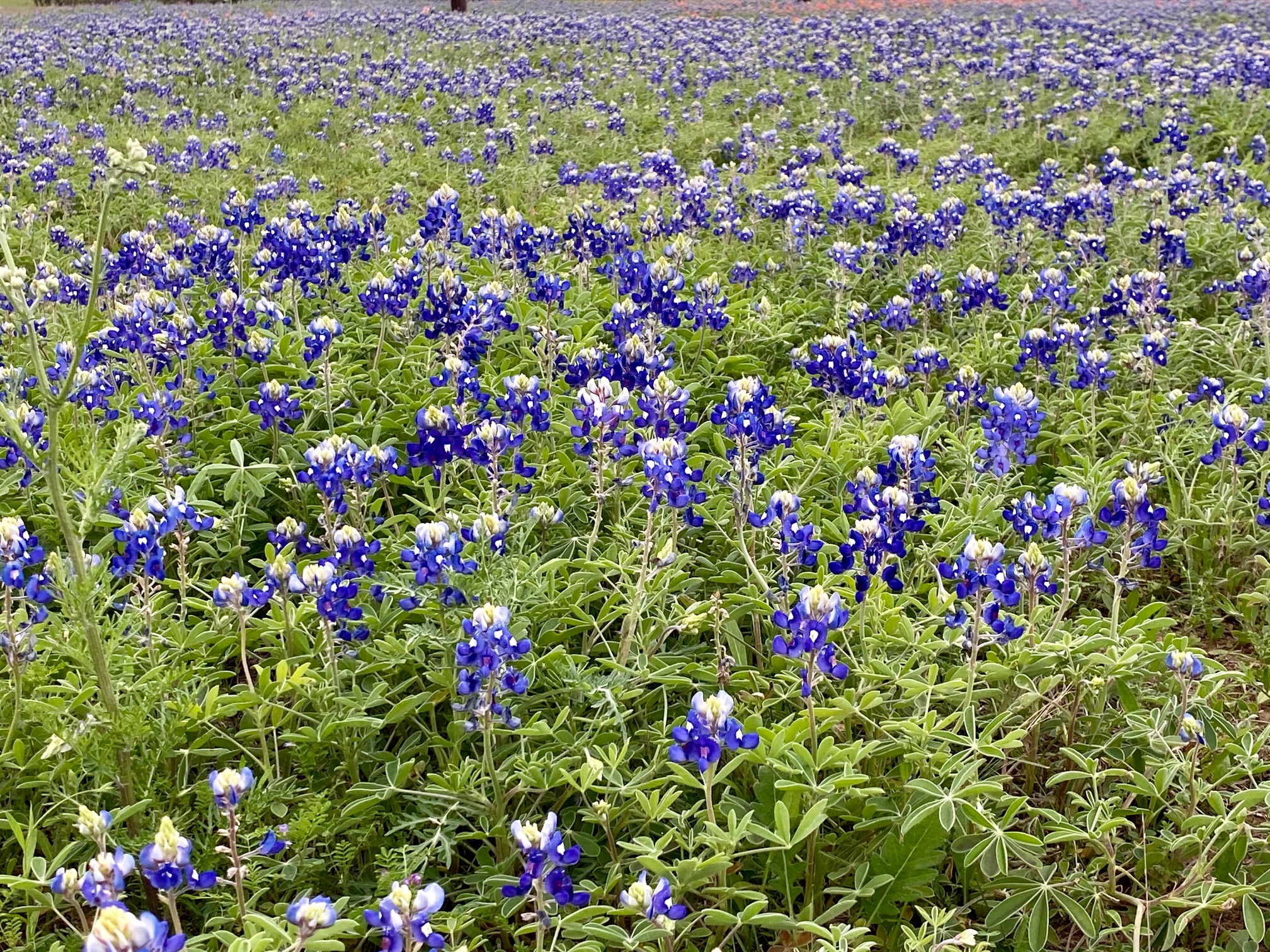
Miles of beautiful bluebonnets are springing up along many of the hilly rights of way along Highway 90 A from Gonzales to Seguin.
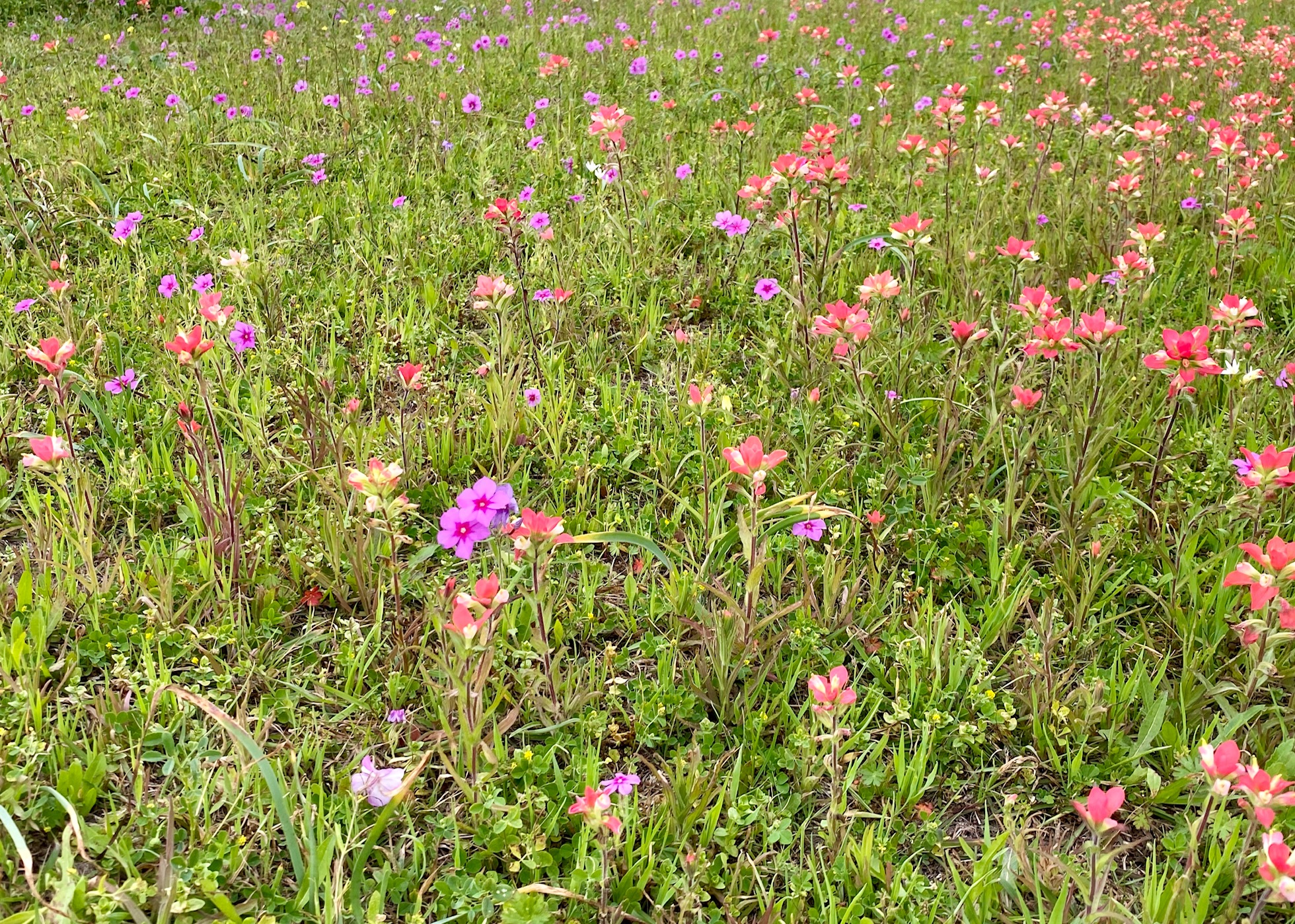
Off I-10 on FM 725 between McQueeney and New Braunfels, you’ll find purple Drummond phlox complementing red Indian paintbrushes.
